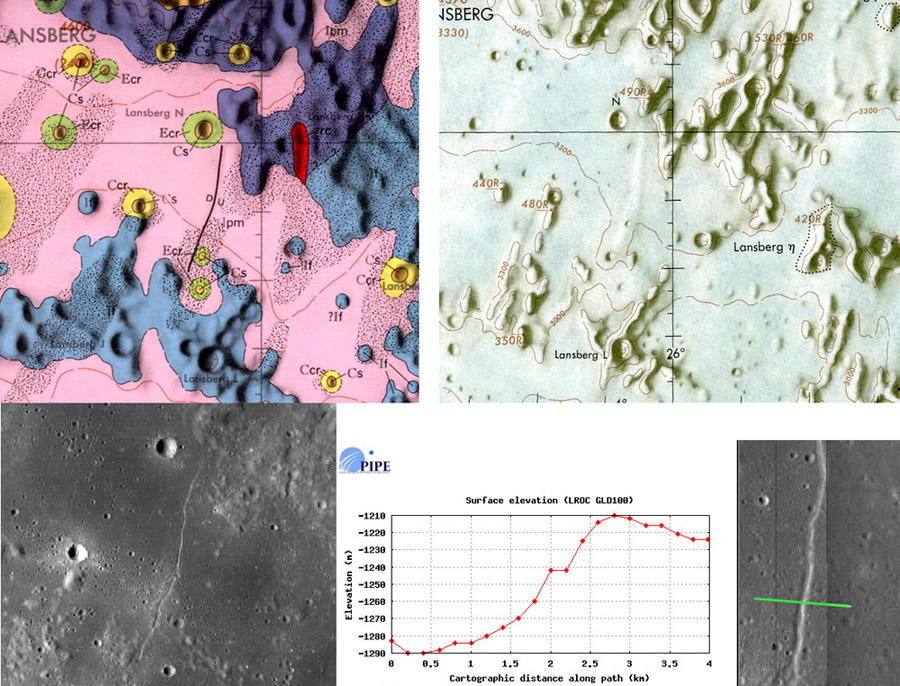Difference between revisions of "March 8, 2013"
(Created page with "__NOTOC__ =50 Year Uncertainty= <!-- ws:start:WikiTextHeadingRule:0:<h1> --> <!-- ws:start:WikiTextLocalImageRule:6:<img src="http://lpod.wikispaces.com/file...") |
|||
| (10 intermediate revisions by 2 users not shown) | |||
| Line 1: | Line 1: | ||
__NOTOC__ | __NOTOC__ | ||
=50 Year Uncertainty= | =50 Year Uncertainty= | ||
| − | + | <!-- Start of content --> | |
| − | + | <!-- ws:start:WikiTextHeadingRule:0:<h1> --> | |
| − | + | <!-- ws:start:WikiTextLocalImageRule:6:<img src="http://lpod.wikispaces.com/file/view/LPOD-Mar8-13.jpg/413080162/LPOD-Mar8-13.jpg" alt="" title="" /> -->[[File:LPOD-Mar8-13.jpg|LPOD-Mar8-13.jpg]]<!-- ws:end:WikiTextLocalImageRule:6 --><br /> | |
<em>montage compiled by Chuck Wood</em><br /> | <em>montage compiled by Chuck Wood</em><br /> | ||
<br /> | <br /> | ||
| − | Yesterday's LPOD ([http://lpod. | + | Yesterday's LPOD ([http://www2.lpod.org/wiki/March_7,_2013 Small Feature Tour]) included a linear shadow-casting feature south of Lansberg. I called it a mini-Straight Wall because of its shadowing. Mike Wirths, whose great images were used to create many LPODs, let me know today that a discussion of this feature has been going on in a Telescope Reviews [http://www.cloudynights.com/ubbthreads/showflat.php/Cat/0/Number/5678611/page/0/view/collapsed/sb/5/o/all/fpart/1 forum] since mid-February when one of its members, Brian Albin, pointed out the feature on a Lunar Orbiter frame. Discussion followed about the features name (there is none) and nature - a fault or a rille? The feature has been recognized at least since 1964 when it appeared as a bright feature, presumably a mare ridge, on Lunar Aeronautical Chart (LAC) [http://www.lpi.usra.edu/resources/mapcatalog/LAC/lac76/150dpi.jpg 76] (above right). In 1965 the US Geological Survey Geological [http://www.lpi.usra.edu/resources/mapcatalog/usgs/I458/72dpi.jpg Map] of the Riphaeus Mountains (above left) depicted the feature as a fault with the east side marked as higher (up) compared to the west. The LRO WAC image (bottom left) shows the feature as a rille in the south and looking sort of like a fault further north. A close up NAC view (bottom right) reveals that even the northern part is a rille, about 200 m wide. The topography cross-section surprisingly shows, however, that the rille marks the mid-section of a 3 km wide, 80 m high rise from west to east. In the Telescope Reviews discussion the geologically perceptive Mardi Clark interpreted the feature as a graben, i.e., a tectonic rille. I have commented twice, yesterday calling it a fault (based on a QuickMap topo profile across a WAC image), and last month I reported that from LRO images that it was a narrow rille. From a plan view it is a rille/graben, the images commonly show the east side is higher as if it were a fault, and the topo cross-section (which I am not certain I completely believe) makes it a thin rille perched in the middle of a continuous rise. It is an unusual linear feature, definitely a rille, but also a shadow-casting elevation.<br /> |
<br /> | <br /> | ||
<em>[mailto:tychocrater@yahoo.com Chuck Wood]</em><br /> | <em>[mailto:tychocrater@yahoo.com Chuck Wood]</em><br /> | ||
<br /> | <br /> | ||
<strong>Related Links</strong><br /> | <strong>Related Links</strong><br /> | ||
| − | Rükl plate [ | + | Rükl plate [https://the-moon.us/wiki/R%C3%BCkl_42 42]<br /> |
| − | <em>[ | + | <em>[[21st Century Atlas of the Moon|21st Century Atlas]]</em> chart 22.<br /> |
<br /> | <br /> | ||
| + | <p><b>Yesterday's LPOD:</b> [[March 7, 2013|Small Feature Tour]] </p> | ||
| + | <p><b>Tomorrow's LPOD:</b> [[March 9, 2013|Perceptions]] </p> | ||
<hr /> | <hr /> | ||
| − | + | {{wiki/ArticleFooter}} | |
| − | |||
| − | |||
| − | |||
Latest revision as of 07:32, 28 October 2018
50 Year Uncertainty

montage compiled by Chuck Wood
Yesterday's LPOD (Small Feature Tour) included a linear shadow-casting feature south of Lansberg. I called it a mini-Straight Wall because of its shadowing. Mike Wirths, whose great images were used to create many LPODs, let me know today that a discussion of this feature has been going on in a Telescope Reviews forum since mid-February when one of its members, Brian Albin, pointed out the feature on a Lunar Orbiter frame. Discussion followed about the features name (there is none) and nature - a fault or a rille? The feature has been recognized at least since 1964 when it appeared as a bright feature, presumably a mare ridge, on Lunar Aeronautical Chart (LAC) 76 (above right). In 1965 the US Geological Survey Geological Map of the Riphaeus Mountains (above left) depicted the feature as a fault with the east side marked as higher (up) compared to the west. The LRO WAC image (bottom left) shows the feature as a rille in the south and looking sort of like a fault further north. A close up NAC view (bottom right) reveals that even the northern part is a rille, about 200 m wide. The topography cross-section surprisingly shows, however, that the rille marks the mid-section of a 3 km wide, 80 m high rise from west to east. In the Telescope Reviews discussion the geologically perceptive Mardi Clark interpreted the feature as a graben, i.e., a tectonic rille. I have commented twice, yesterday calling it a fault (based on a QuickMap topo profile across a WAC image), and last month I reported that from LRO images that it was a narrow rille. From a plan view it is a rille/graben, the images commonly show the east side is higher as if it were a fault, and the topo cross-section (which I am not certain I completely believe) makes it a thin rille perched in the middle of a continuous rise. It is an unusual linear feature, definitely a rille, but also a shadow-casting elevation.
Chuck Wood
Related Links
Rükl plate 42
21st Century Atlas chart 22.
Yesterday's LPOD: Small Feature Tour
Tomorrow's LPOD: Perceptions
COMMENTS?
Register, Log in, and join in the comments.



